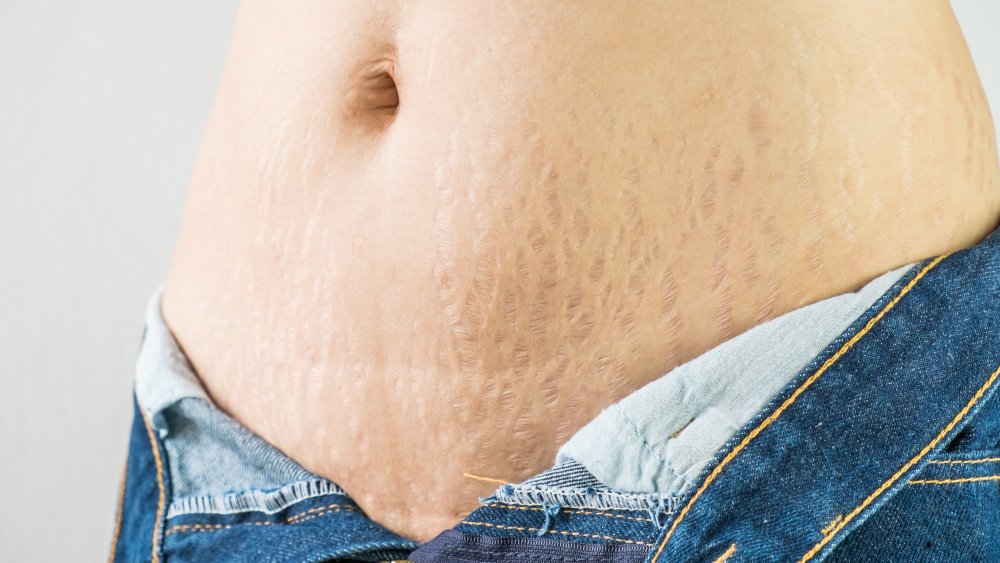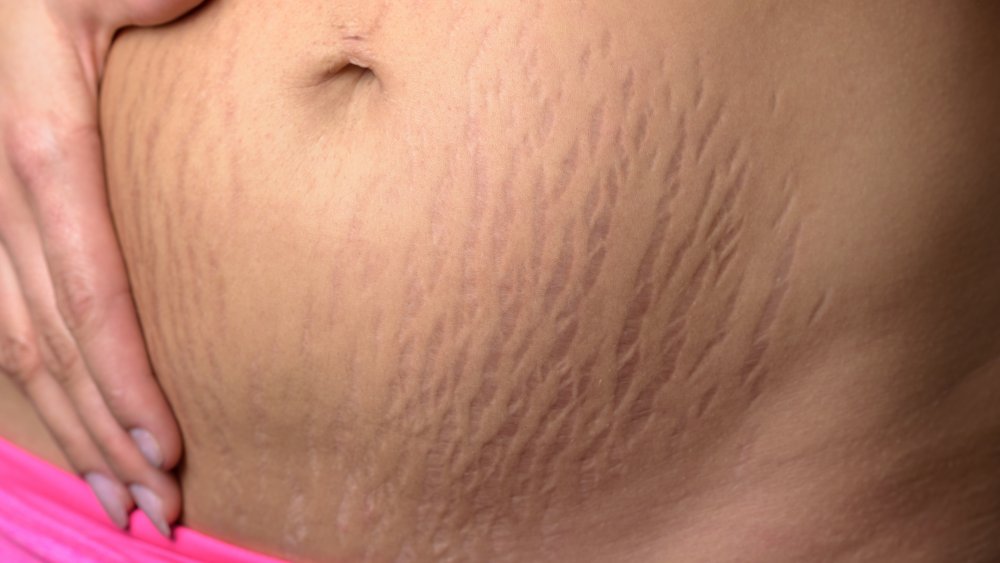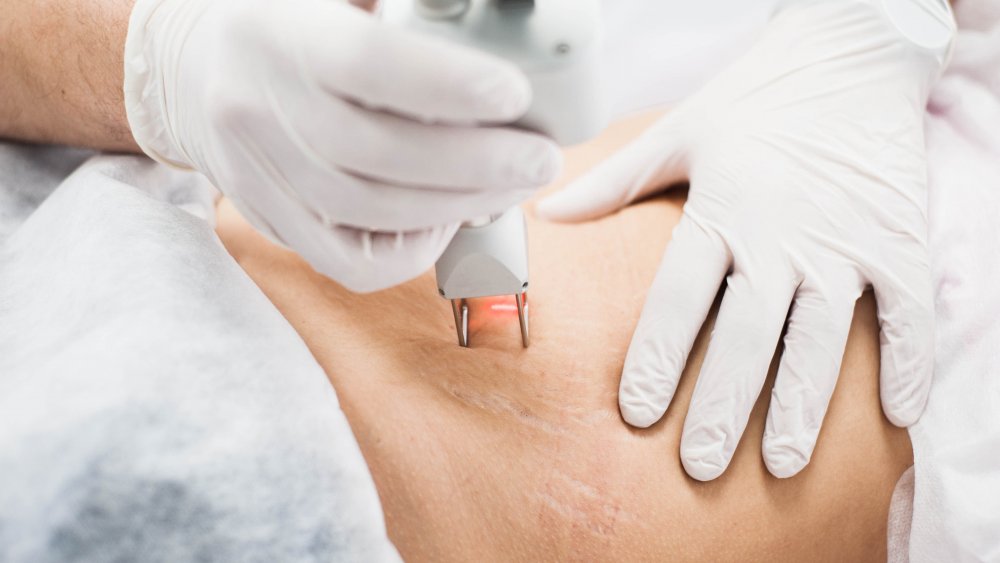The Truth About Stretch Marks
There are bits about our body we love, and bits that we live with. Then there are bits that we can do without, no matter how positive we are about our body image, and topping that list, for many, is stretch marks.
We often blame stretch marks on sudden weight gain, weight loss cycles, and pregnancy, but dermatologists say that's not really the case. "During puberty, pregnancy, and weight changes, elevated levels of hormones called glucocorticoids are produced by the adrenal glands," says Zoe Diana Draelos, a consulting professor of dermatology at the Duke University School of Medicine (via Real Simple). "Weight gain itself doesn't cause stretch marks — it promotes the hormonal changes that cause them."
Scientists at genetics firm 23andMe say a person's tendency to develop stretch marks goes beyond environment, age, and gender — it could involve genetics too (via Huffington Post). Their study involved an analysis of almost 34,000 23andMe clients: all were of European descent; nearly 14,000 people had stretch marks while almost 21,000 did not. Researchers found four genetic areas that they could link to the development of stretch marks — one of them was the elastin gene.
Stretch marks need to be dealt with as early as possible
So if stretch marks are controlled by genetics, are they inevitable? Yes, but doctors also say if you catch them early, you are likely to minimize their aesthetic impact. The marks first appear as what doctors call "rubra" — which are colored red, pink, red, or purplish; they also first appear inflamed before they become white.
Doctors say it's important to get to stretch marks before they fade out, because by then there is not much you can do. Before the marks turn white, dermatologists like Draelos recommend applying a vitamin A oil, or a drugstore cream with retinol on the affected areas. Since most body lotions don't have retinol, you may want to try using a face cream on the affected area. Also, if you are still pregnant and you're worried about stretch marks (among other things), it's important to remember that vitamin A cannot be used at this time, so you'll have to wait until baby arrives to get that routine started.
Stretch marks can't be avoided... but they can be treated
Dermatologists say the most effective treatment for stretch marks is laser therapy, which 10 Daily says works very well with skin issues that also include pigmentation, discoloration, sun spots, age spots, and acne scarring. New York City dermatologist Bruce Katz explains, "The laser's light is absorbed by hemoglobin in the blood, causing vessels and visible redness to disappear." He also often uses a fractional-CO2 laser to "drill microscopic holes into skin to take away scar tissue so new collagen is stimulated." But in order for this to work, you'll need at least three or four treatments, which Real Simple has priced at between $500 to $800 each — also, these treatments likely won't be covered by insurance.
If all this sounds too much for you, you could wait for the marks to fade out and embrace the stretch.


